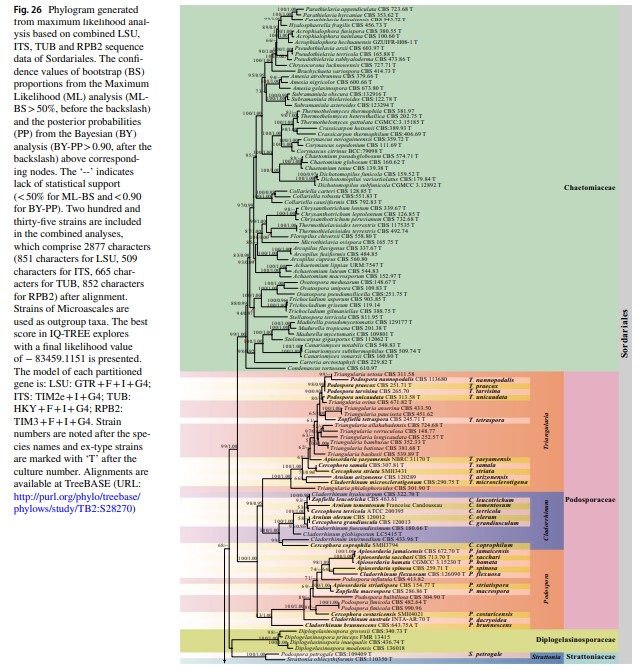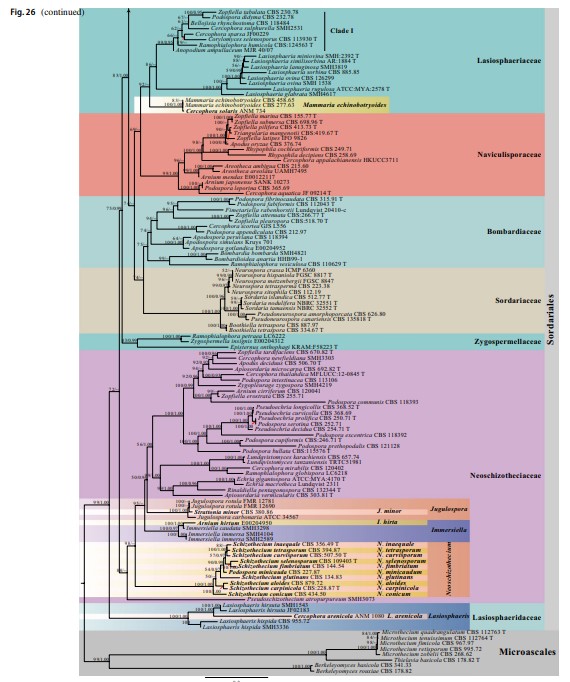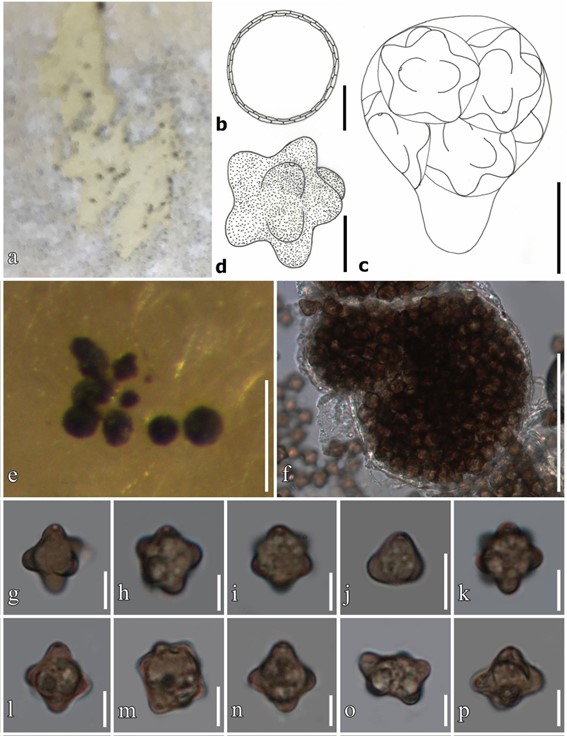Stellatospora terricola Tad. Ito & Nakagiri, Mycoscience 35(4): 413 (1994)
Index Fungorum number: IF 414193, MycoBank number: MB 414193; Facesoffungi number: FoF 10028; Fig. 47
Isolated from rice field soil, colonies on oatmeal agar (OA). Sexual morph: Mycelium white, superficial, effuse. Ascomata 75–120 µm diam., cleistothecial, solitary or gregarious, globose to subglobose, dark brown to black, covered in hyaline hairs. Peridium 3–5 µm wide, composed of pale brown to hyaline cells of textura angularis. Asci 3–8-spored, unitunicate, obpyriform to oval, evanescent. Ascospores (9–)11–15(–17) µm (x̄= 12 µm, n = 50) diam., multi-seriate, stellate to irregular with up to 9 short protuberances when mature, aseptate, pale greenish brown to brown, with a germ pore on one protuberance, guttulate. Asexual morph: Undetermined (adapted from Ito and Nakagiri 1994).
Material examined – Japan, Ikeda, Osaka, rice field soil, 22 May 1990, T. Ito (NBRC-IFO-H-12166, holotype).
Known hosts and distribution – Rice field soil, Japan (type locality) (Ito and Nakagiri 1994).
Notes – We re-examined the type material and found that there are star-like ascospores filling the ascomata, but no complete asci. Stellatospora terricola (CBS 811.95) is basal to Ovatospora and Trichocladium in Chaetomiaceae (100%ML/1.00PP, Fig. 26).



Fig. 47 Stellatospora terricola: a, e–p (NBRC-IFO-H-12166, holo- type); b–d (redrawn from Ito and Nakagiri 1994). a Dry culture. b Ascoma in cross section. c Ascus. e Ascomata with mycelium. F Squashed ascoma. d, g–p Ascospores. Scale bars: b = 50 µm, c. g–p = 10 µm, d = 5 µm, e = 200 µm, f = 100 µm
